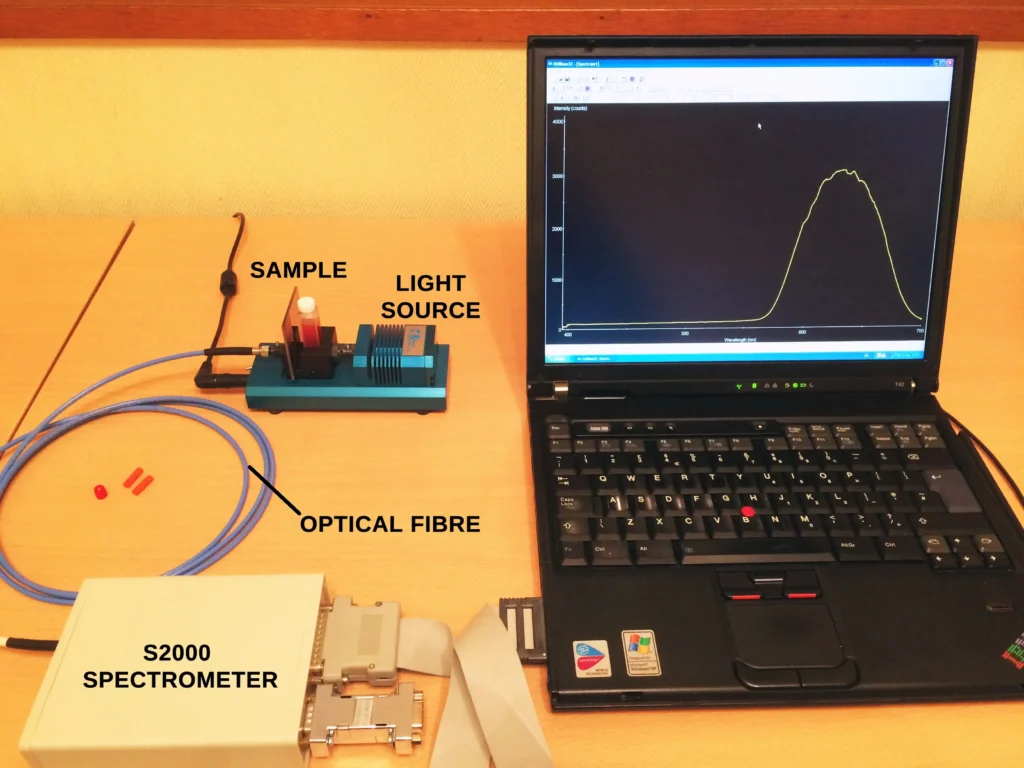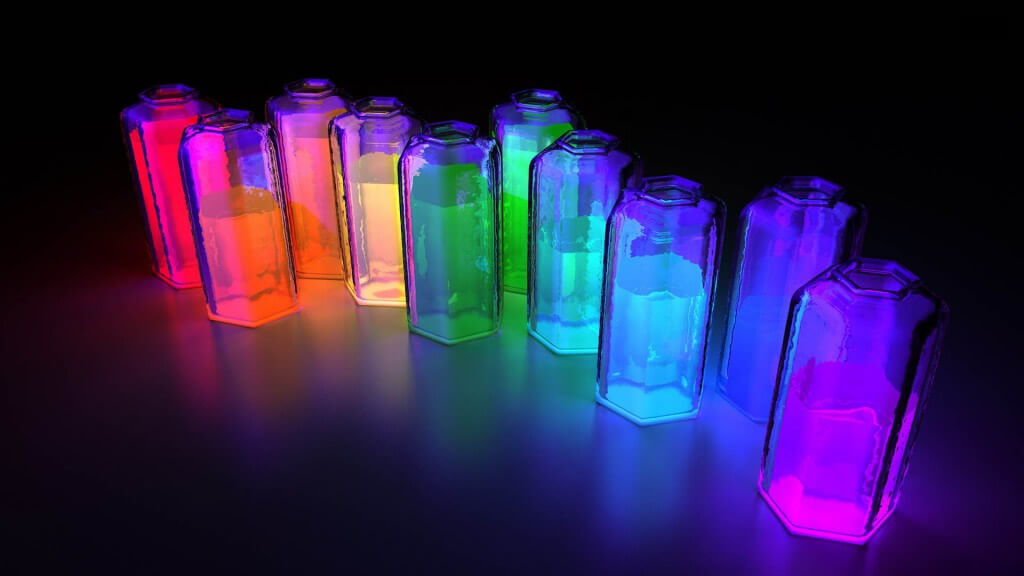
I’ll say it again: Raman rules! No apologies because I’m a big fan of his.
So who on earth am I talking about? I am referring to the Indian physicist Chandrasekhara Venkata Raman who made a remarkable discovery in 1928 concerning the behaviour of light scattered from molecules. “CV”, as I am somewhat cheekily going to call him, was awarded the Nobel Prize for Physics in 1930 for his meticulous efforts in this field of study. His discovery was named after him and is called the Raman Effect.
Background
So what actually is the Raman Effect and why is it important for us today? In essence, the Raman Effect is an extremely weak scattering of light from any “Raman active” material, when a photon of light collides with a molecule. It is a fascinating phenomenon and with today’s high-efficiency detectors and lasers, it is a relatively straightforward effect to detect and measure with the right equipment.
But back in Raman’s day, well before lasers, sensitive detectors and specialized filters had been invented, this must have been an incredibly difficult thing to observe in the laboratory. Perhaps one reason why CV was awarded a well-deserved Nobel prize.
The Raman effect will always take place for Raman active materials after a collision between a photon and a target molecule, but we may not always detect it without the right conditions and equipment. I will return to the importance of Raman techniques and applications towards the end of this post, but for now we have to consider what exactly is this phenomenon in more scientific terms (without all the mathematics and quantum mechanics).
When a light photon collides with a Raman-active molecule it is scattered by the collision. But that collision hides some subtle details and one of three things can happen:
The photon can simply be scattered elastically by the molecule with no change in energy or wavelength. This is referred to as Rayleigh Scattering (after the 19th century British physicist Lord Rayleigh). This is the most probable outcome from the collision. All that happens is that the photon bounces off the molecule and changes direction without gaining or losing energy in the process.
Alternatively, the photon can be scattered inelastically. It loses some of its energy during the collision with the molecule, which itself gets promoted to a higher energy state. This is known as Stokes Raman Scattering.
Another outcome is that the photon is scattered inelastically again, but in this case it gains some energy from the molecule during the collision because the molecule just happened to be in an excited state at the moment of the collision and transferred some energy to the photon. The molecule therefore loses some energy in transferring it to the photon and the photon gains some energy. This is known as Anti-Stokes Raman Scattering.
In all cases, the Law of the Conservation of Energy of the total system (photon + molecule) before and after collision is unchanged. This is an absolute universal physical law which has proven itself throughout history. (So apologies to all Star Trek and Star Wars fans, whose TV shows always seem to defy some law or other of physics… I remain a big fan though!)
Now let’s look at the Raman Effect in a little more technical detail and in order to do this we have to consider the energy levels of a molecule.
It is well understood from physical principles that the dominant process in this interaction between the photon and the molecule is elastic scattering. This is the Rayleigh Scattering signal (Case 1) mentioned earlier.
The Stokes Raman signal (Case 2 above) is at least one million times weaker than the Rayleigh signal which explains why Raman had a hard time finding it. And with Case 3 (anti-Stokes Raman scattering) the effect is weaker still for this reason:
In order for Anti-Stokes scattering to take place, the target molecule already needs to be in a vibrationally excited state before it can transfer some of its excess energy to the photon. The statistical probability of this is much lower, because when systems are in thermodynamic equilibrium, (a Boltzmann distribution of states), the lower energy state is always more populated than any upper excited energy state, regardless of the temperature.
Therefore the rate of transitions between the more populated state (Stokes scattered transitions) will, in general, always be greater than the rate of transitions from the less populated states (anti-Stokes scattered transitions).
The three types of transitions are depicted schematically in Figure 2.

You have heard me mention on several occasions a “Raman-active” molecule. So what is this? In order for a molecule to exhibit the Raman effect, there has to be a change in the polarizability of the molecule and the Raman signal is directly proportional to this change in polarizability. More information regarding what in spectroscopy are called the selection rules for a molecule to be Raman active can be found in the references.
A Raman spectrum is a plot of Raman scattered light intensity as a function of the shift in energy (or frequency) after inelastic scattering. This depends on the precise frequencies of the rovibronic (rotational-vibrational-electronic) states within the molecule.
Because the light photons do not actually excite the molecule and promote an electron to a higher energy molecular orbital, there is no actual transition between the molecule’s electronic energy levels with the Raman Effect. The Raman Effect is a purely scattering phenomenon and is totally distinct from absorption and emission processes that we observe with fluorescence and phosphorescence. In these cases, a molecule in an excited electronic state emits a photon as it returns to the ground state. The latter phenomena have been explained in other posts.
Raman scattering effects should also be distinguished from the infrared absorption process. IR spectra are produced from a true absorption process, as opposed to a scattering process. It turns out that molecules that do not exhibit an IR absorption spectrum can, and in many cases do, exhibit a Raman spectrum due to this change in polarizability of the molecular dipole moment. They are described as being “Raman-active”.
Thus Raman techniques can complement the structural information obtained from IR absorption methods. The two techniques are often used in tandem to obtain the maximum possible structural information on molecules.
More information is readily available online that explains the Raman Effect in more quantitative detail.
The Raman Spectrum
Since we are dealing with a light scattering effect and not absorption or emission, a Raman spectrum is a plot of the intensity of Raman scattered light as a function of the energy (frequency) difference, Δν, from the elastically scattered Rayleigh photons. This frequency difference is called the Raman Shift and is usually measured in wavenumbers (cm-1.). Thus a Raman spectrum for a molecule will show spectral lines situated symmetrically around the principal Rayleigh (Δν = 0) scattered line and represent the Stokes and Anti-Stokes scattered peaks.
Due to the differences in populations between the ground and higher energy states as mentioned earlier on Boltzmann populations, the relative intensities of these two groups of Stokes and Anti-Stokes peaks will usually be different, with Stokes scattered peaks typically being much stronger than Anti-Stokes scattered peaks.
A typical Raman spectrum is shown schematically here:
Recent Developments & Conclusions
In the last 40-50 years or so the Raman Effect, and the detection and measurement of Raman spectra of molecules, has steadily progressed with technological improvements. Raman investigations used to be somewhat difficult experiments to design and implement, even in university research labs with sizeable budgets, powerful lasers and high resolution spectrometers and monochromators attempting to isolate the weak Raman signals.
Even as recently as 10-20 years ago a dispersive Raman spectrometer would still have a significant footprint on the lab bench, and for high resolution applications it still does. But today we have small, powerful diode pumped solid state (DPSS) lasers that have useful Raman excitation wavelengths in the visible and near IR. These are used with highly efficient laser line rejection filters that allow the weak Raman lines to pass whilst blocking Rayleigh scattered light at the laser wavelength. Couple that with sensitive detectors inside hand-sized spectrometers and you have a highly effective and compact Raman system.
These improvements allow us to obtain Raman spectra from a vast range of materials. Add a microscope to the setup to examine small areas within a heterogeneous sample and we have an extremely practical, even portable, analytical technique to determine the chemical composition of different materials.
The recording of Raman spectra today from a large variety of different substances such as pharmaceutical drugs, geological samples and minerals, polymers of all kinds, archival documents, museum artwork, paintings, jewellery and archaeological specimens, as well as the more conventional lab samples of organic solvents and solutions, is now commonplace with Raman spectrometers and Raman probes.
This concludes this post on the Raman Effect and future posts will present some of results with a real-life Raman system.
Just remember… Raman Rules!
References
- Introductory Raman Spectroscopy, 2nd Ed., J. R. Ferraro, K. Nakamoto and C. W. Brown, Elsevier, 2003.
- Modern Raman spectroscopy: A Practical Approach, Ewen Smith and Geoffrey Dent, 2nd Ed., John Wiley & Sons, 2019.




